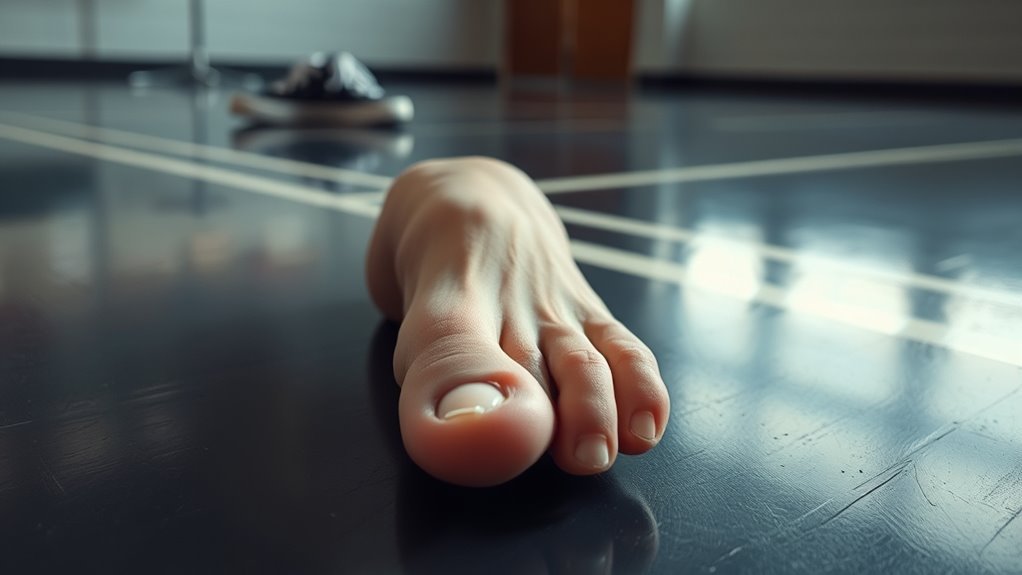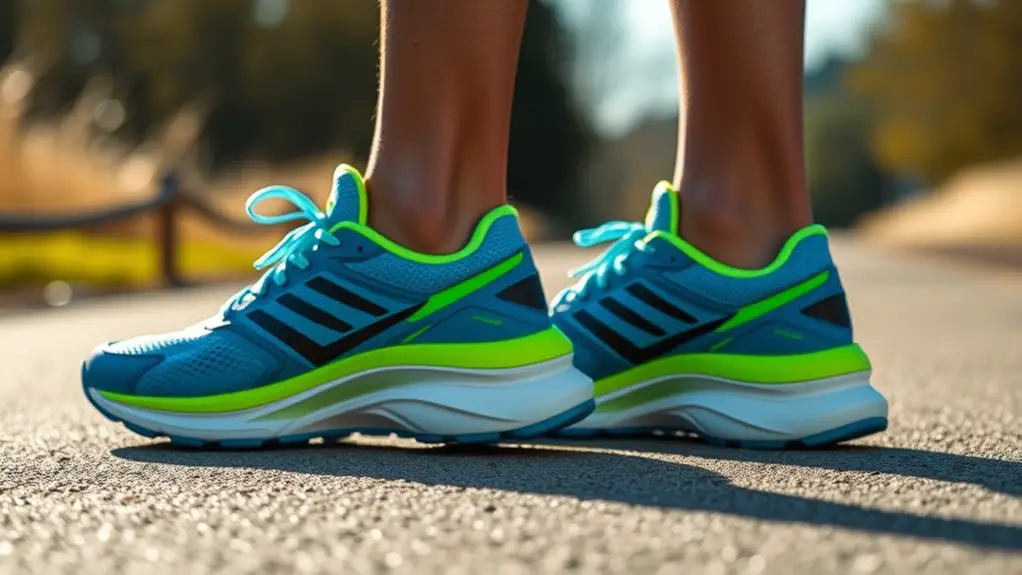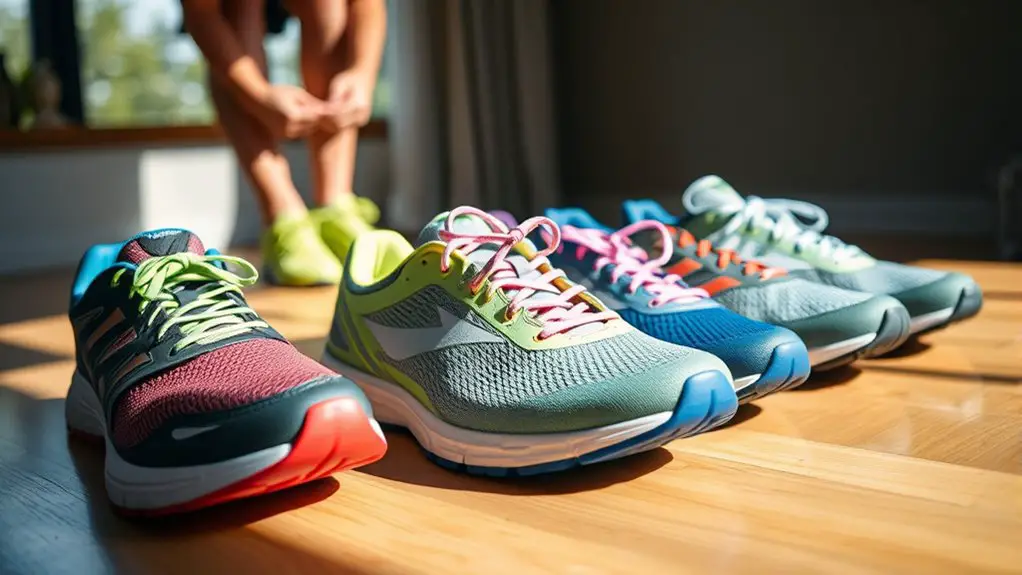Yes, athlete’s foot is contagious. It spreads easily through direct contact with infected skin or by touching contaminated surfaces like floors and towels. Walking barefoot in public places, sharing shoes, or using someone else’s towels can put you at risk. Good foot hygiene is essential to prevent infection. You can take steps to protect yourself and even consider treatment options if you do get infected. Learn more about how to safeguard your feet and treat this common issue.
Understanding Athlete’s Foot: What It Is
Athlete’s foot is a common fungal infection that primarily affects the skin between your toes. It can cause itchiness, redness, and peeling, which can be quite bothersome. This skin condition thrives in warm, moist environments, making it easy to catch, especially in communal areas. You might feel frustrated dealing with this uncomfortable issue, but understanding it is the first step toward freedom from it. The infection is usually mild but can spread if left untreated. By keeping your feet clean and dry, you can minimize your risk. Remember, knowledge is power; the more you know about this fungal infection, the better equipped you’ll be to tackle it and reclaim your comfort. Embrace the journey to healthy feet!
How Athlete’s Foot Spreads
While you might think athlete’s foot only affects you, it can easily spread to others and even to different parts of your own body. Understanding the transmission routes helps you take control of your health. Fungal spores thrive in warm, damp areas, making it essential to stay vigilant. Here are some common ways athlete’s foot spreads:
- Walking barefoot in communal areas like pools or gyms
- Sharing shoes or socks with an infected person
- Touching contaminated surfaces, like floors or towels
- Scratching the infected area and then touching other body parts
- Not keeping your feet dry and clean
Common Myths About Contagion
You might think you know how athlete’s foot spreads, but there are plenty of myths out there. Many people underestimate the risks in public spaces or how sharing personal items can contribute to transmission. Let’s clear up these misconceptions and get the facts straight.
Misunderstanding Transmission Methods
Many people mistakenly believe that athlete’s foot is easily spread through casual contact or shared surfaces, leading to unnecessary fear of contagion. In reality, understanding the transmission pathways can help ease those concerns. Here are some common myths about how athlete’s foot spreads:
- It spreads through brief skin contact.
- Sharing shoes or socks guarantees infection.
- Walking barefoot on gym floors is always risky.
- Touching someone with athlete’s foot directly infects you.
- It’s contagious from just sitting near someone affected.
While athlete’s foot is a fungal infection, direct skin contact with an infected area is usually required for transmission. So, focus on personal hygiene and avoid unnecessary panic; knowledge is your best ally in staying free from athlete’s foot.
Public Spaces Risks
Public spaces often fuel misconceptions about athlete’s foot contagion, leading to heightened anxiety over potential exposure. While it’s true that fungi thrive in warm, damp environments, understanding hygiene practices can help you navigate these spaces confidently.
| Public Space | Risk Level | Recommended Hygiene Practices |
|---|---|---|
| Swimming Pools | Moderate | Shower before and after swimming |
| Gyms | High | Wear flip-flops in locker rooms |
| Shared Showers | High | Use personal towels |
| Public Restrooms | Low | Avoid direct contact with surfaces |
| Hotels | Moderate | Inspect and clean footwear |
Personal Item Sharing
When it comes to sharing personal items, misconceptions about athlete’s foot contagion can lead to unnecessary fear. While it’s true that fungi thrive in damp environments, the risk of transmission through shared items largely depends on personal hygiene and item cleanliness. Here are some common myths:
- Sharing shoes can’t spread athlete’s foot if they’re dry.
- It’s safe to share towels if they’re freshly washed.
- Athlete’s foot can’t live on non-porous surfaces.
- Wearing socks over shoes prevents transmission.
- Only those with visible symptoms can spread the infection.
Understanding these truths helps you enjoy life without undue worry. Just maintain good personal hygiene and keep your items clean, and you can confidently share with friends and family!
Environments That Increase Risk
When you’re in public showers or pools, the risk of catching athlete’s foot increases considerably. Walking barefoot in these wet environments can expose your feet to the fungi. Additionally, using shared athletic equipment can further elevate your chances of infection.
Public Showers and Pools
Have you ever wondered why athlete’s foot seems to spread so easily? Public showers and pools are prime breeding grounds for this pesky fungus. When you walk barefoot in these damp environments, it’s all too easy to pick up the infection. To stay free and healthy, keep these points in mind:
- Always use flip-flops or water shoes for shower safety.
- Dry your feet thoroughly after swimming or showering.
- Avoid walking barefoot in communal areas.
- Practice good pool hygiene by showering before entering the pool.
- Don’t share towels or personal items.
Shared Athletic Equipment
Public showers and pools aren’t the only places where athlete’s foot can thrive; shared athletic equipment poses a significant risk as well. When you’re using shared gear like gym mats, weights, or even shoes, you’re increasing your chances of picking up this fungal infection. The dampness and warmth from sweat create an ideal environment for fungi to flourish. To maintain your freedom from athlete’s foot, it’s essential to adopt good hygiene practices. Always wipe down equipment before use, wear moisture-wicking socks, and consider bringing your own gear whenever possible. Remember, a little prevention goes a long way in keeping your feet healthy and free from infection. Don’t let athlete’s foot cramp your style!
Symptoms of Athlete’s Foot
Although it might seem like a minor issue, recognizing the symptoms of athlete’s foot is essential for effective treatment. Staying aware of what to look for helps you maintain good foot hygiene and address any problems quickly. Here are some common symptoms to watch out for:
Recognizing athlete’s foot symptoms is crucial for treatment and maintaining good foot hygiene. Stay vigilant!
- An itchy rash between your toes or on the soles
- Redness and inflammation in affected areas
- Dry or flaky skin that may peel
- Blisters or sores that can become painful
- A foul odor emanating from your feet
If you notice any of these signs, it’s important to take action. Ignoring them can lead to worsening discomfort and complications. Remember, your feet deserve the freedom to feel good!
Prevention Strategies to Avoid Infection
To keep athlete’s foot at bay, practicing good foot hygiene is essential. Wash your feet daily with soap and water, making sure to dry them thoroughly, especially between the toes. Choose breathable footwear and moisture-wicking socks to help keep your feet dry. Avoid walking barefoot in public places like pools or locker rooms, as these are breeding grounds for fungi. You might also consider using antifungal measures, like powders or sprays, to further protect your feet. Changing socks regularly and opting for shoes made from natural materials can make a big difference. By incorporating these simple strategies into your routine, you’ll enjoy freedom from discomfort and reduce your risk of infection. Stay proactive, and your feet will thank you!
Treatment Options for Athlete’s Foot
When dealing with athlete’s foot, effective treatment options can help you regain comfort and health. You don’t have to suffer in silence; there are several ways to tackle this pesky issue.
- Topical treatments: Over-the-counter creams and sprays can target the infection directly.
- Antifungal medications: Prescription options may be necessary for persistent cases.
- Foot hygiene: Keep your feet clean and dry to prevent further infection.
- Powders: Use antifungal powders to absorb moisture and reduce friction.
- Home remedies: Natural options like tea tree oil may provide relief for some.
Explore these avenues and find the best solution that works for you, allowing you to get back to feeling free and comfortable in your own skin!
Frequently Asked Questions
Can Pets Get Athlete’s Foot From Humans?
No, pets can’t get athlete’s foot from you. Think of it like a locked garden; the fungus that causes athlete’s foot thrives in human environments, but it doesn’t easily cross species. While your furry friends can face their own fungal infections, they’re not likely to catch your athlete’s foot. Keeping an eye on your pets’ health is essential, so always consult a vet if you notice any unusual symptoms.
How Long Can the Fungus Survive on Surfaces?
The fungus can survive on surfaces for several days to weeks, depending on conditions like humidity and temperature. This surface lifespan makes it important for you to maintain cleanliness, especially in shared areas. Fungal transmission can occur if you come into contact with contaminated surfaces, so wearing flip-flops in public showers and regularly disinfecting your home can help. Staying aware of these factors gives you the freedom to prevent infections effectively.
Is Athlete’s Foot More Common in Certain Climates?
Yes, athlete’s foot is more common in tropical regions and humid environments. These climates create the perfect breeding ground for the fungus that causes the infection, as moisture and warmth allow it to thrive. If you love being outdoors or spending time in warm, humid places, it’s especially important to keep your feet dry and clean. Taking these simple steps can help you enjoy your freedom while reducing the risk of athlete’s foot.
Can Athlete’s Foot Cause Other Health Issues?
Athlete’s foot can be like a tiny storm cloud that brings more than just rain; it can lead to secondary infections if left untreated. When the fungus weakens your skin, it can trigger an immune response, making you vulnerable to bacteria entering through cracks. So, while chasing your freedom in life, don’t ignore those pesky symptoms. Taking care of your feet can prevent a minor issue from spiraling into something more serious.
Does Wearing Certain Types of Shoes Increase Risk?
Yes, wearing certain types of shoes can increase your risk of athlete’s foot. Shoes made from non-breathable materials can trap moisture, creating a perfect environment for fungus to thrive. To protect yourself, choose breathable materials like cotton or leather and prioritize foot hygiene. Keep your feet clean and dry, and rotate your shoes to allow them to air out. Taking these steps helps you enjoy the freedom of staying active without worry.




